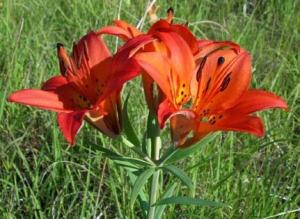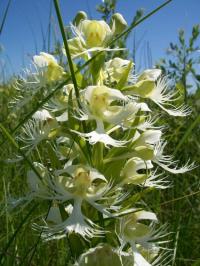Site Preparation for Interseeding
Please remember to read and follow herbicide label instructions. For specific recommendations not covered by the label, contact your distributor or manufacturer representative. Please consult with your local USDA Service Center for a more in depth look at your site’s specific restoration needs and eligibility.
Preparation Steps
Consult your local conservation office for appropriate dates to start site preparation if your land is currently in a program.
Do not rush the site preparation steps. It is important to clean equipment off before and after entering the area to be inter-seeded to prevent the spread of undesirable species.
- Conduct a prescribed burn in late summer/early fall to remove the vegetation and thatch layer
- If you can’t burn the site, hay the site
And/Or
- Spray the site with two quarts of glyphosate per acre in the spring.
- If using other herbicides, ensure there is no long-lasting residual
- Use prescribed fire in late summer/early fall to remove the vegetation and thatch layer
- If you can’t burn the site, hay the site
Seeding Info
Inter-seeding may be done by broadcast or drill. If broadcast seeding, use 1½ times the recommended seeding rate. It is important to plant early successional species along with a mixture of middle to late successional species. Also try to have a mix of species that flower in the spring, summer, and fall to provide good pollinator forage. Dormant seeding work best to increase diversity. If conditions do not allow, seeding can be done in the spring.
- 1st summer after planting:
- Keep the planting clipped to a height of 6-8 inches to allow sunlight to reach the new seedlings
- 2nd summer after planting:
- Clip the planting to a height of 10-12 inches one to two times (depending on site conditions)
Native plantings take 3-4 years to establish and may take up to 5-6 years to establish depending on environmental factors. Some disturbance (e.g., burn, graze, mow, hay, etc.) to the site a few years after the inter-seeding may be needed to stimulate the growth of seeded grasses and forbs. Consult your local USDA Service Center for disturbance recommendations.



